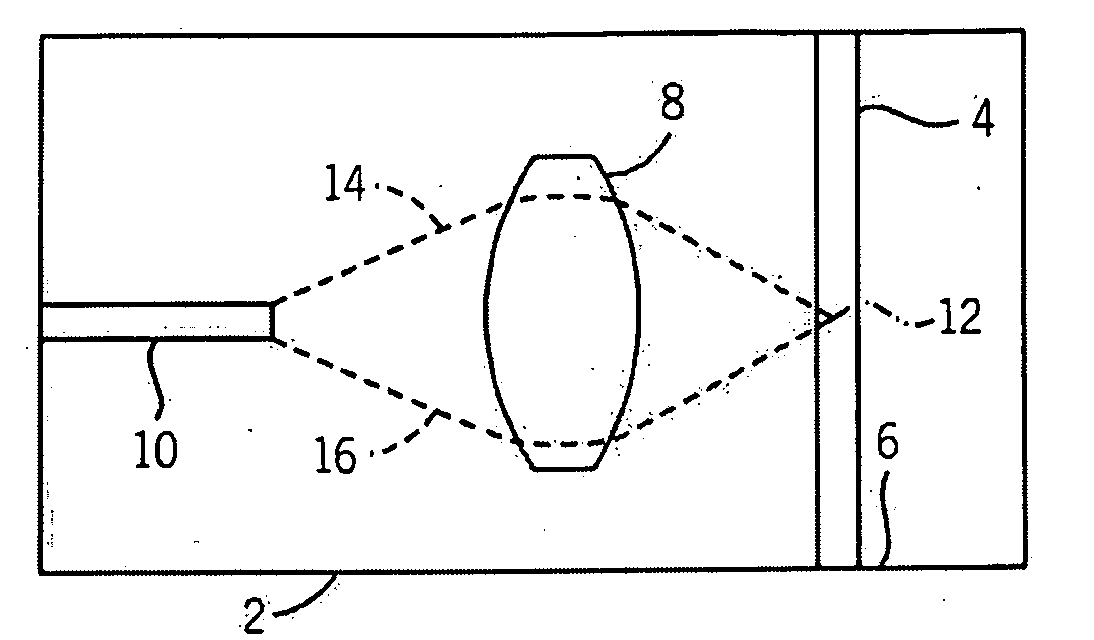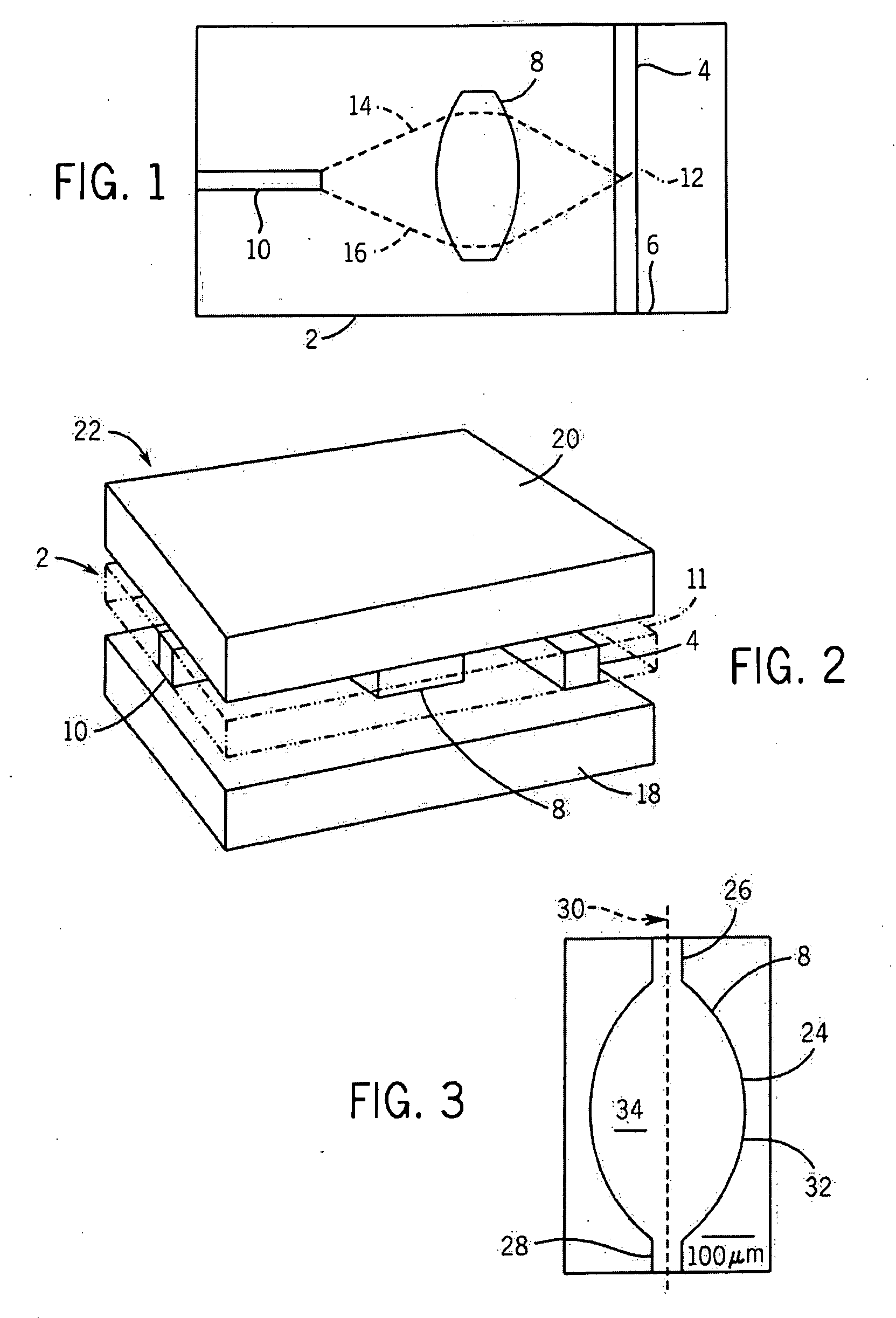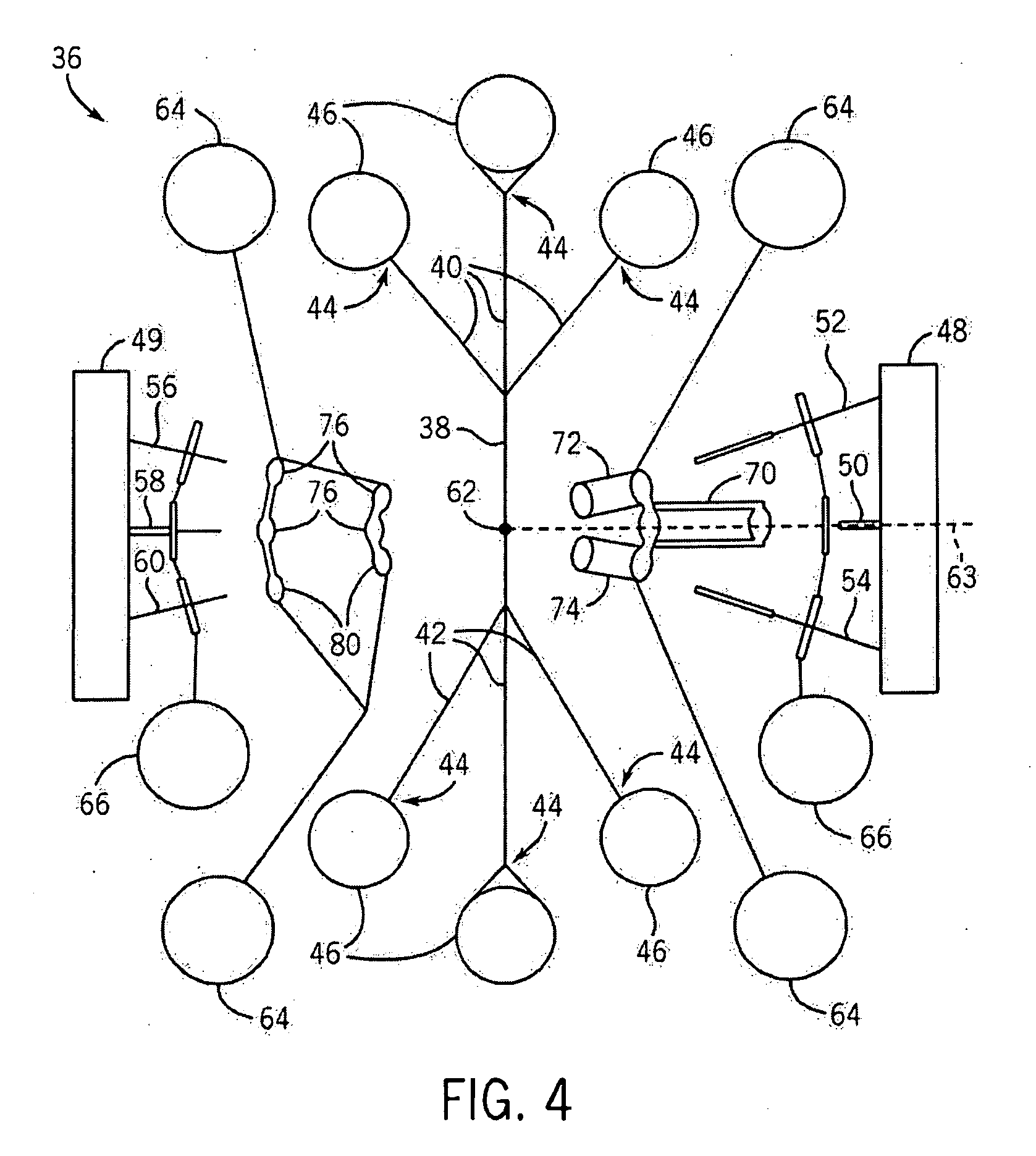System and method for flow cytometry
a flow cytometry and flow cytometry technology, applied in the field of optical devices, can solve the problems of increasing the complexity and cost of such cytometry systems, limiting the use of laboratory laboratories in major metropolitan areas, and the relatively high complexity and cost of conventional flow cytometry techniques, so as to reduce light loss by reflection, improve the efficiency of directing light, and improve the effect of directing ligh
- Summary
- Abstract
- Description
- Claims
- Application Information
AI Technical Summary
Benefits of technology
Problems solved by technology
Method used
Image
Examples
Embodiment Construction
[0024]A top plan view of components 2 of an exemplary microfluidic flow cytometer are shown in schematic form. As shown, the cytometer components 2 include a microfluidic channel 4 that is capable of conducting fluids that can contain various biological materials such as blood cells or other types of cells, particles or possibly other types of materials. Fluid flow (as directed by a pump, gravity, or some other force) can proceed through the microfluidic channel 4 along a direction represented by an arrow 6, although the fluid can be directed in either direction depending upon the embodiment. Spaced apart to the side of the microfluidic channel 4 is a microfluidic lens 8, and additionally spaced apart from the lens is a waveguide 10. Thus, the lens 8 is between the microfluidic channel 4 and the waveguide 10, with the waveguide 10 extending away from the lens in a direction that also extends away from the channel.
[0025]As shown, the waveguide 10 in the present embodiment is orientat...
PUM
| Property | Measurement | Unit |
|---|---|---|
| Flow rate | aaaaa | aaaaa |
| Speed | aaaaa | aaaaa |
| Frequency | aaaaa | aaaaa |
Abstract
Description
Claims
Application Information
 Login to View More
Login to View More - R&D
- Intellectual Property
- Life Sciences
- Materials
- Tech Scout
- Unparalleled Data Quality
- Higher Quality Content
- 60% Fewer Hallucinations
Browse by: Latest US Patents, China's latest patents, Technical Efficacy Thesaurus, Application Domain, Technology Topic, Popular Technical Reports.
© 2025 PatSnap. All rights reserved.Legal|Privacy policy|Modern Slavery Act Transparency Statement|Sitemap|About US| Contact US: help@patsnap.com



